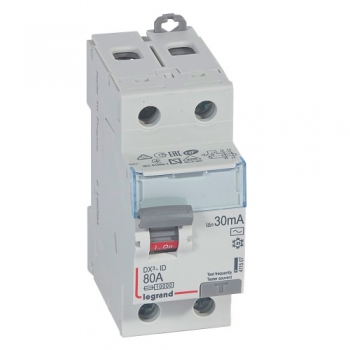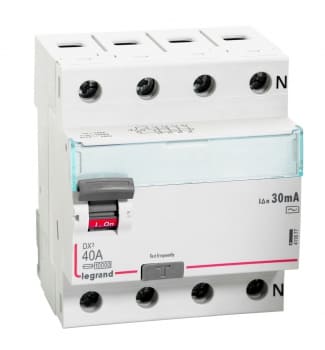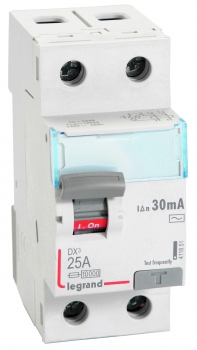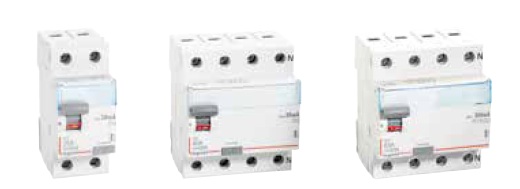
Tamil Nadu Electricity Regulatory Commission, earlier this year, issued an order to make the use of residual current circuit breakers (RCCB) mandatory for electrical installations, with a view to improving safety and reducing fire risk. We have Himanshu Arora, Product Marketing Manager, Legrand India, sharing keen insights on the subject of RCCBs – their evolution, their working and their potential to significantly reduce risk to life and property. Arora observes that RCCBs are rapidly gaining acceptance in India. He also feels that mandating measures, as seen with TNERC, must be emulated by other electricity regulatory bodies as well.
Let us start by understanding what “residual current” means. What are its causes and what could be the detrimental impact of residual current in an electric circuit?
Residual current or earth leakage current is defined as “electric current in an unwanted conductive path under normal operating conditions.”
It is also referred as protective conductor current. Protective conductor current is defined as an ‘electric current appearing in a protective conductor, such as leakage current or electric current resulting from an insulation fault.’
These residual current or earth leakage current, above a certain limit, is hazardous and can lead to risk of electrocution to people or fire in an installation or a building.
Let us understand direct contact, indirect contact, and risk of fire:
 Direct contact: Direct contact is caused by humans and may be due to either carelessness or ineptness. This is when someone contacts with a live electrical component of a device or installation. For example, a person inadvertently touching a live cable; a child sticking a metal object into a power socket; someone touching live bus bar in a cabinet.
Direct contact: Direct contact is caused by humans and may be due to either carelessness or ineptness. This is when someone contacts with a live electrical component of a device or installation. For example, a person inadvertently touching a live cable; a child sticking a metal object into a power socket; someone touching live bus bar in a cabinet.
Indirect contact: Indirect contact is independent of humans. It results from an internal hardware fault. For example, a person touching the metal frame of an electrical appliance, say a toaster with defective insulation, may be electrocuted through no fault of their own if the appliance is not protected.
Electrical risks do not concern just people. These risks, especially fire, affect installations as well. A 500mA residual current, for example, flowing through combustible material is sufficient to ignite such material after a certain time. Every electrical installation is subject to current leakages which can vary considerably depending on such factors as the installation’s condition, age, environment, etc. These current leaks may flow through the fabric of the building (trunking, metal girders or other metal components), generating heat which in turn may lead to fire.
“The main function of a residual current circuit breaker is to ensure that people are protected from any risk of electrocution. It can also ensure protection against risk of fire.”
Also read:Customers Are Now Slowly Realizing The Importance Of RCCBs: Havells India
How does an RCCB (residual current circuit breaker) work and how does it help dealing with residual current?
 The main function of a residual current circuit breaker is to ensure that people are protected from any risk of electrocution. It can also ensure protection against risk of fire.
The main function of a residual current circuit breaker is to ensure that people are protected from any risk of electrocution. It can also ensure protection against risk of fire.
A residual current device continuously measures the difference between the value of the input and the output currents. If the value is not equal to zero, this indicates a leak.
When this leak reaches the level at which the differential is set (its sensitivity 30mA, 100mA, 300mA), the device trips and breaks the circuit.
If protection against direct contact is required, use residual currentdevice with a sensitivity of 30 mA. If protection against indirect contact is required, use residual currentdevices with a sensitivity of: 30 mA,100 mA,300 mA, The rating (40A, 63A, etc.) is selected according to the load.
“An earth leakage circuit breaker (ELCB) is a safety device used in electrical installations with high earth impedance to prevent shock. However, ELCBs have limitations.”
Do the terms RCCB and RCD (residual current device) refer to the same device?
Yes, RCD is the term that covers a family of devices: RCCBs – residual current circuit breaker, which gives protection against earth leakage faults; RCBOs – residual current circuit breaker with overload protection, which, in simple terms, is a combination of RCCB and MCB in single device.
What is the critical difference between an ELCB (earth leakage circuit breaker) and an RCCB?
An earth leakage circuit breaker (ELCB) is a safety device used in electrical installations with high earth impedance to prevent shock. It detects small stray voltages on the metal enclosures of electrical equipment and interrupts the circuit if a dangerous voltage is detected. Once widely used, more recent installations instead use residual-current devices (RCD or RCCBs) which instead detect leakage current directly.
Do RCCBs address all issues that an ELCB does?
ELCB has limitations. As it is voltage-operated type, it can only protect against faults or shocks to metalwork connected to the circuit ground, connected to the VOELCB, it cannot detect current leaving a live wire and running to ground by another path, such as via a person standing on the earth. If the wrong type was used on an installation, the level of protection given could be substantially less than what was intended.
RCD or RCCB is therefore the right solution.
We also understand that ELCBs are being phased out in favour of RCCBs. What is the on-ground situation?
Voltage sensing ELCBs were first introduced about sixty years ago. Current sensing ELCBs were first introduced about forty years ago. For many years, the voltage operated ELCB and the differential current operated ELCB were both referred to as ELCBs because it was a simpler name to remember. But the use of a common name for two different devices gave rise to considerable confusion in the electrical industry.
To eliminate this confusion, the IEC decided to apply the term residual current device (RCD) to differential-current-operated ELCBs. Residual current refers to any residue when comparing current in the outbound and return currents in the circuit. In a single-phase circuit, this is simply the live or phase current minus the neutral current. In a 3-phase circuit all current carrying conductors must be sensed.
“Much effort is being made to spread awareness for the use of RCDs or RCCBs.”
Is there enough awareness among consumers (especially residential and commercial) to have RCCBs installed, alongside conventional MCBs?
 Much effort is being made to spread awareness for the use of RCDs or RCCBs. Dedicated campaigns are being done by manufacturers and electrical communities to educate consumers the electrical risks they are exposed to and how to protect themselves.
Much effort is being made to spread awareness for the use of RCDs or RCCBs. Dedicated campaigns are being done by manufacturers and electrical communities to educate consumers the electrical risks they are exposed to and how to protect themselves.
Great effort is also being made to educate, electrical contractors and electricians. Dedicated seminars are being conducted, to make them understand, the selection of the product, wiring, do’s and don’ts, and the advantages of using RCDs in residential and commercial buildings.
Even various electricity regulatory commissions, and the ministry of power, have been playing an important role to spread awareness among public.
Recently, Tamil Nadu Electricity Regulatory Commission (TNERC) issued an order making installation of RCCB/RCD mandatory. Do you think such a move is worth emulating by other states?
We appreciate the provision made by TNERC, mandating the installation of RCDs in all electricity service connections. It will help in avoiding lot of electrical accidents, including fire and loss of precious human life.
This step of making the use of RCDs mandatory is really required not only to spread awareness on electrical safety, but also its prompt implementation.
In my opinion, other state electricity regulatory commissions should also adopt such a mandatory provision for the use of RCDs.
Legrand (including “Indo Asian”) is a leading name in RCCBs. Please tell us about technological improvements that have made RCCBs more effective, over the years.
 Lot of advancement has been made in terms of technology. As we know, with time the nature of loads has changed. Now we see lot of electronics such as computers, LED TV’s, printers, electronic controllers etc, which internally comprises thyristors, rectifier bridges etc, in our loads.
Lot of advancement has been made in terms of technology. As we know, with time the nature of loads has changed. Now we see lot of electronics such as computers, LED TV’s, printers, electronic controllers etc, which internally comprises thyristors, rectifier bridges etc, in our loads.
The leakage current from these loads not only has AC sinusoidal components but also has DC components, which can lead to nuisance tripping or non-tripping with traditional RCDs.
Thus, now we have mainly three types of RCDs: Type AC, Type A and type Hpi.
Type AC RCDs are sensitive to residual alternating currents and are used in: standard applications. Type A RCDs are sensitive to residual alternating currents and residual currents with a DC component. These are used in special applications such as single-phase UPS, PV system, machine tools, etc. Type Hpi RCDs offer enhanced immunity to unwanted tripping in environments with disturbances. These detect faults with DC components, for example thyristors, and find application in powerful IT equipment, computers printers, variable speed drives, telecommunication equipment, etc.
“We have been noticing an upward trend in sales of RCCBs over the past five years.”
How is Legrand promoting the deployment of RCCBs to electrical contractors, and to consumers at large?
We are continuously educating electrical contractors, electricians, and other associated community members as we believe that they are the real consultants to our end consumers and play a very important role in this safety chain.
Do you see an uptick in sales of RCCBs in recent years?
Yes, we have been noticing an upward trend in sales of RCCBs over the past five years. We believe that it will continue as more and more people are getting aware of the safety one gets by using RCDs. Even mandating steps by regulatory commissions will help.


